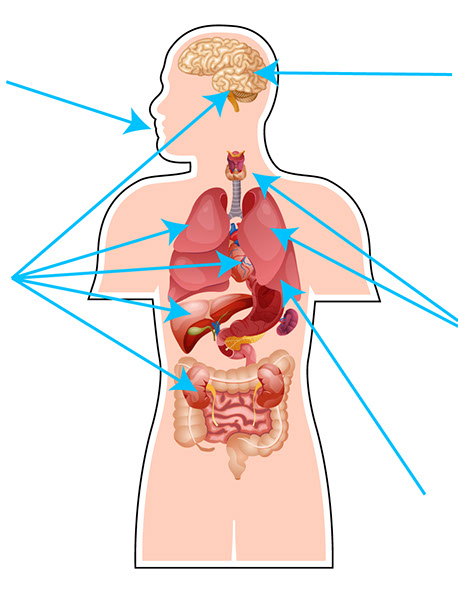
Module 3:
The Dangers Found Inside
When someone vapes, they inhale much more than flavored aerosol mist. They breathe in addictive nicotine and at least 31 dangerous chemicals and compounds that can affect the human body.
Module 3 reveals just how dangerous vaping is for your body.
Meet Dr. Devika Rao. A Pediatric Pulmonologist at Children’s Health in Dallas, Texas who worked tirelessly with her team and hospital staff at identifying and treating the variety of side effects among youth who were vaping.
A LOOK INSIDE
Did you know vaping can affect how the cells in your nose, throat, and lungs protects you from germs and can increase the chances of an infection from bacteria or a virus, like COVID-19?
Well, here’s how. The nicotine found in vapes and other tobacco products makes it harder for the human body to recover from infections because it suppresses the body’s immune system.
Here’s a detailed look at how these volatile chemicals can hurt your entire body.

Breathing in ultrafine metal particles like lead, nickel and tin can cause asthma attacks, coughing, wheezing, and shortness of breath.
The brain continues to grow until at least the age of 25. Using nicotine as a youth can permanently harm the parts of the brain that control attention, learning, mood, and impulse control.
Formaldehyde can cause throat and lung cancer.
Heavy metals found in vapes can build up in the blood and organs in the body, causing damage to the brain, heart, lungs, kidneys, and liver.
Exploding batteries have caused serious burns to the skin and face. At least one person has died from an exploding vape. You can read about it here.
TOMMY'S STORY
Meet Tommy Lowrance. A lifelong smoker who believed the e-cigarette ads that claimed vaping was safer than cigarettes and decided to make the switch. Now, he’s living with those consequences, which will affect him and his family for the rest of his life.
Sources for module 3 include Texas Department of State Health Services, Truth Initiative, Journal of American Medical Association, and the New Medical Life Sciences.
Training Module
Modules
Home
Say What! EST. 2011
Phone
512.245.8082
Mailing Address
Texas School Safety Center
ATTN: Say What Program
Texas State University
601 University Drive
San Marcos, TX 78666

Say What! was created and designed by young people from across Texas and connects students interested in eliminating tobacco from their schools and communities. The Say What! movement is funded by the Texas Department of State Health Services through a contract with the Texas School Safety Center at Texas State University.

